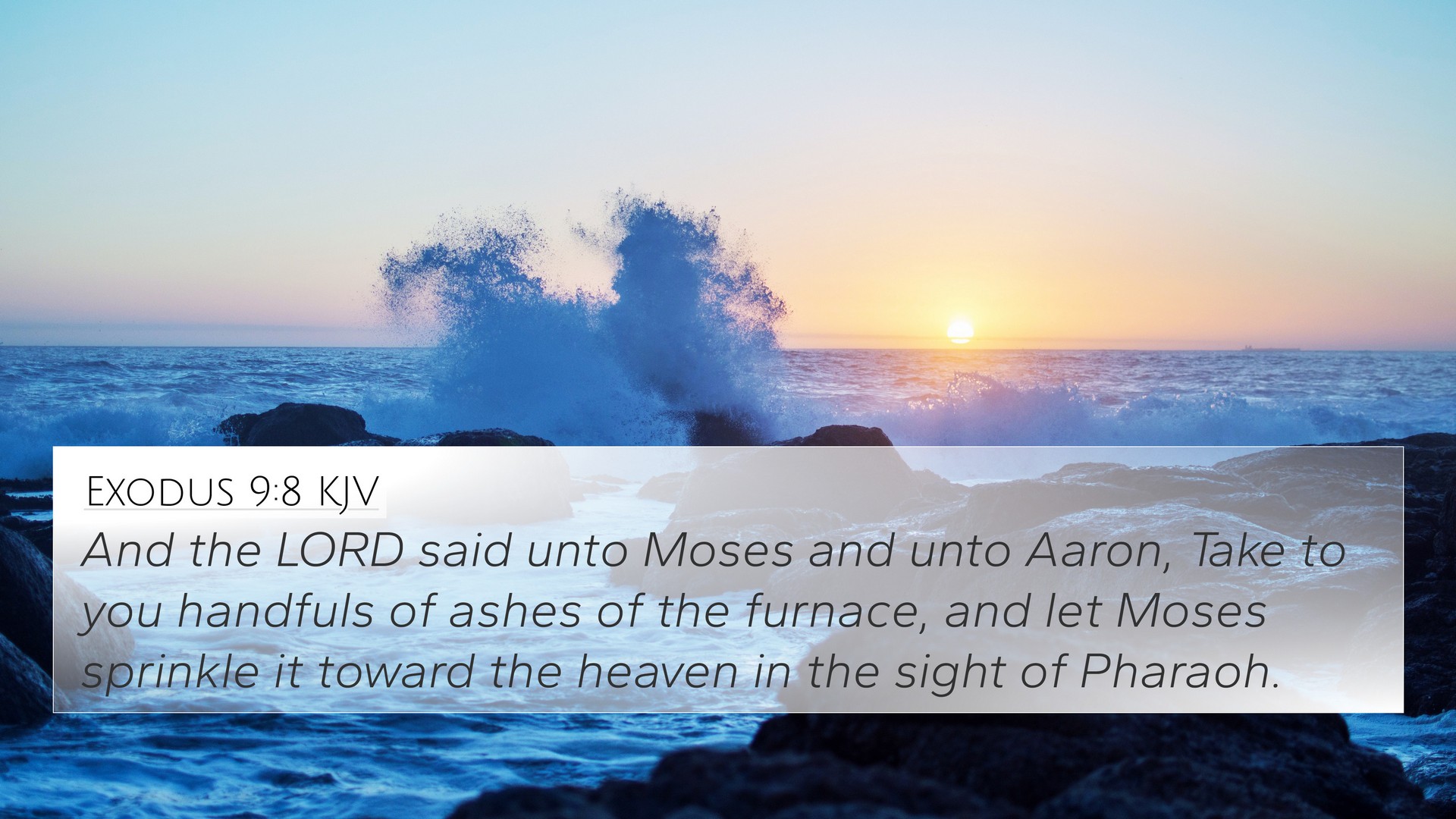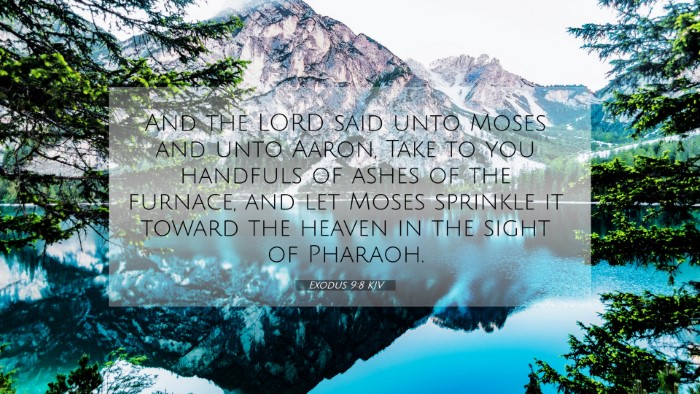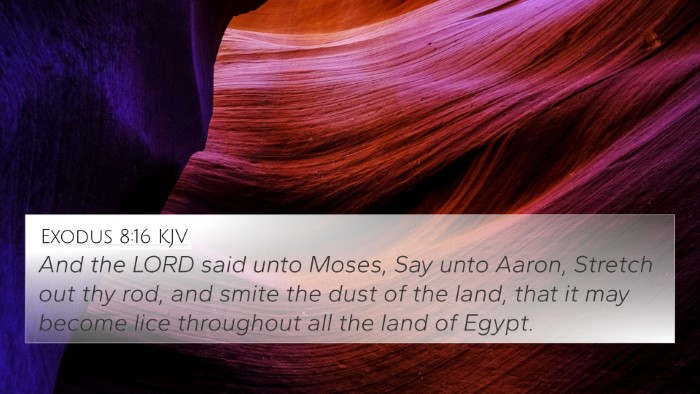Meaning and Interpretation of Exodus 9:8
Exodus 9:8 (ESV): "And the LORD said to Moses and Aaron, 'Take handfuls of soot from the kiln and let Moses throw them in the air in the sight of Pharaoh. It shall become fine dust over all the land of Egypt, and become boils breaking out in sores on man and beast throughout all the land of Egypt.'"
Overview
The verse encapsulates a pivotal moment in the narrative of the plagues of Egypt, where God commands Moses and Aaron to confront Pharaoh with a sign of divine judgment. The subsequent boils signify a deeper spiritual and moral truth regarding the rebellion against God.
Commentary Insights
This verse has been the subject of considerable interest among scholars and theologians. The insights from various public domain commentaries, such as Matthew Henry, Albert Barnes, and Adam Clarke, reveal the layered meanings embedded in this passage.
Meaning of Key Components
- “Soot from the kiln”: The soot represents the residue of labor, possibly indicating the oppression of the Israelites as they were forced into slavery. It is symbolic of the sin and impurity inherent in Egypt's actions.
- “Boils breaking out”: The physical illness manifests a spiritual affliction. It's a direct representation of the consequences of Pharaoh's hardened heart and refusal to submit to God's will.
- “In the sight of Pharaoh”: This shows God’s intention to reveal His power not only to the Egyptians but especially to Pharaoh, who had been obstinate in his refusal to let the Israelites go.
Thematic Connections
The plague of boils signifies God's assertion of authority over creation and judgment upon those who defy Him. The narrative fits within a sequence of plagues that serve as both punishment and an invitation to acknowledge God's sovereignty.
Bible Verse Cross-References
- Exodus 7:14-24: The first plague, the waters turning into blood, sets a precedent for God’s power.
- Exodus 8:16-19: The plague of gnats shows diminishing capabilities of Egyptian magicians, establishing divine authority.
- Exodus 9:14-15: God makes it clear that He has power over the heart of man, targeting Pharaoh’s pride and command.
- Job 2:7: This verse parallels the boils' affliction to Job’s circumstances, illustrating that suffering can serve a purpose within God's plan.
- Deuteronomy 28:27: The curses listed include boils and are tied to disobedience, which the Egyptians are experiencing.
- Psalms 105:31: A poetic recount of judgment upon Egypt, echoing the significance of God's signs and wonders.
- Romans 9:17: Paul references Pharaoh's hardness as a lesson in God's sovereignty over nations.
Connecting Themes and Concepts
Throughout the Bible, the themes of disobedience, judgment, and mercy emerge. The plagues can be seen as direct interactions with the gods of Egypt, underscoring God’s supremacy over all earthly powers.
Tools for Bible Cross-Referencing
Understanding biblical passages often involves utilizing tools for Bible cross-referencing. Resources such as a Bible concordance or a Bible cross-reference guide can be invaluable in tracing thematic and contextual links across Scripture.
Methodology for Cross-Referencing
To effectively uncover connections between Bible verses, consider the following methods:
- Contextual Analysis: Examining the historical and literary context of verses enhances understanding.
- Thematic Study: Group verses by overarching themes such as judgment or deliverance.
- Comparative Analysis: Explore parallels and contrasts between plagues in Exodus and other biblical judgments.
Conclusion
Exodus 9:8 serves as a crucial reminder of God's sovereignty and the serious implications of resistance to His will. By cross-referencing related verses and utilizing comprehensive Bible study tools, believers can deepen their understanding of Scripture and its interconnectedness. This verse, both in its immediate context and broader theological implications, illustrates God’s dynamic interaction with humanity.



